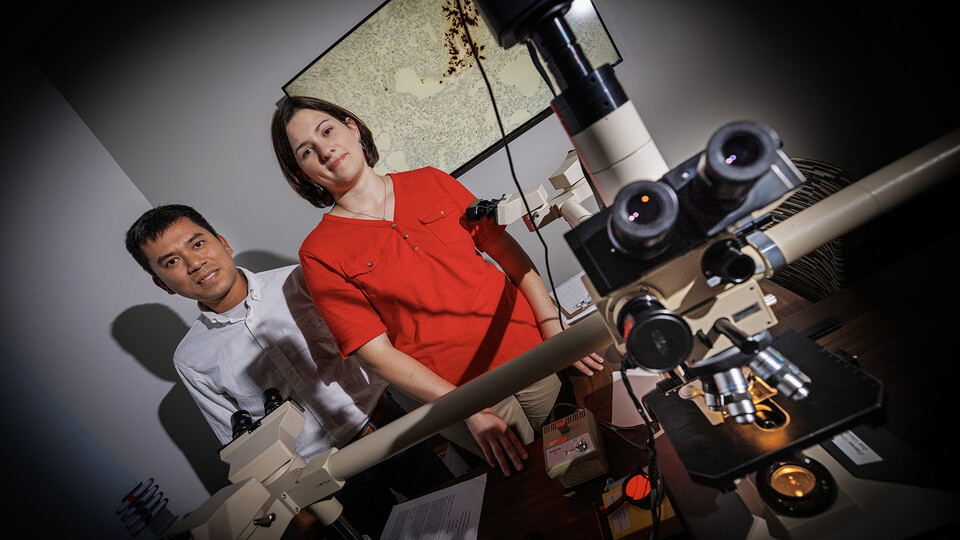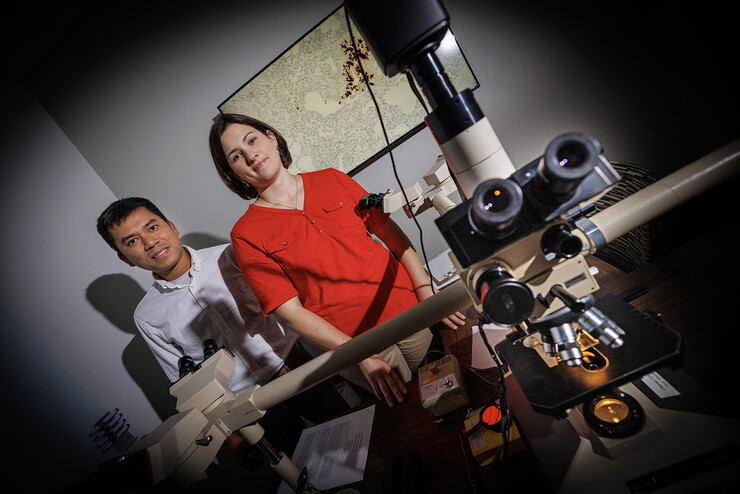· 3 min read
Husker scientists’ research project aims to crack code of major swine virus

Two University of Nebraska–Lincoln scientists have received a $627,000 federal grant to study a viral disease posing a significant threat to the swine industry worldwide.
Porcine reproductive and respiratory syndrome virus is widespread, causing reproductive failure in sows and major respiratory illness in pigs of all ages. In addition, the virus modulates the pig’s immune system, making the animal more susceptible to other infectious diseases. The costs to the U.S. swine sector from PRRSV annually total an estimated $1.1 billion.
Hiep Vu, associate professor of animal science, is the co-director of the research project, funded by a three-year grant from the U.S. Department of Agriculture. The other co-director is Sarah Sillman, assistant professor with Nebraska’s School of Veterinary Medicine and Biomedical Sciences and the Nebraska Veterinary Diagnostic Center.
The project will examine how PRRSV infects swine macrophages, the immune cells that recognize, engulf and destroy harmful intruders, including viruses and bacteria.
Viruses can only make copies of themselves when they sneak into a living cell.
“As long as we can prevent viruses from entering a cell, we can prevent viral infection,” Vu said.
Figuring out which cells the virus can attack and how it gets inside them strengthens scientists’ ability to create vaccines and intervention strategies to stop the virus’s spread and harmful effects.
PRRSV is picky, infecting only a few specific cell types, including swine macrophages and the monkey cell line MARC-145.
Vu recently discovered a PRRSV variant that nearly lost the ability to infect swine macrophages while still being able to infect MARC-145 cells effectively. This PRRSV variant has just one tiny change in its genome compared with the other PRRSV that infects macrophages.
“I will compare those two viruses to find out why one infects the swine macrophage and the other does not,” Vu said.
Such knowledge, Vu said, can “be critical for the development of a safe and efficacious PRRSV vaccine. Additionally, this knowledge will provide novel insights for generating PRRSV-resistant pigs, either through natural selection or genome editing.”
The project illustrates the frequent multidisciplinary collaboration among Husker faculty in studying animal diseases. For this project, Sillman’s expertise in veterinary pathology complements Vu’s work in molecular virology, enabling a detailed study of PRRSV characteristics and its manifestations of disease in pigs.
“Most of my studies involve collaboration with a veterinary pathologist at the Diagnostic Center,” Vu said. “For almost all of my publications, I have at least one collaborator from the Diagnostic Center.”
This research was supported by the intramural research program of the U.S. Department of Agriculture, National Institute of Food and Agriculture.








